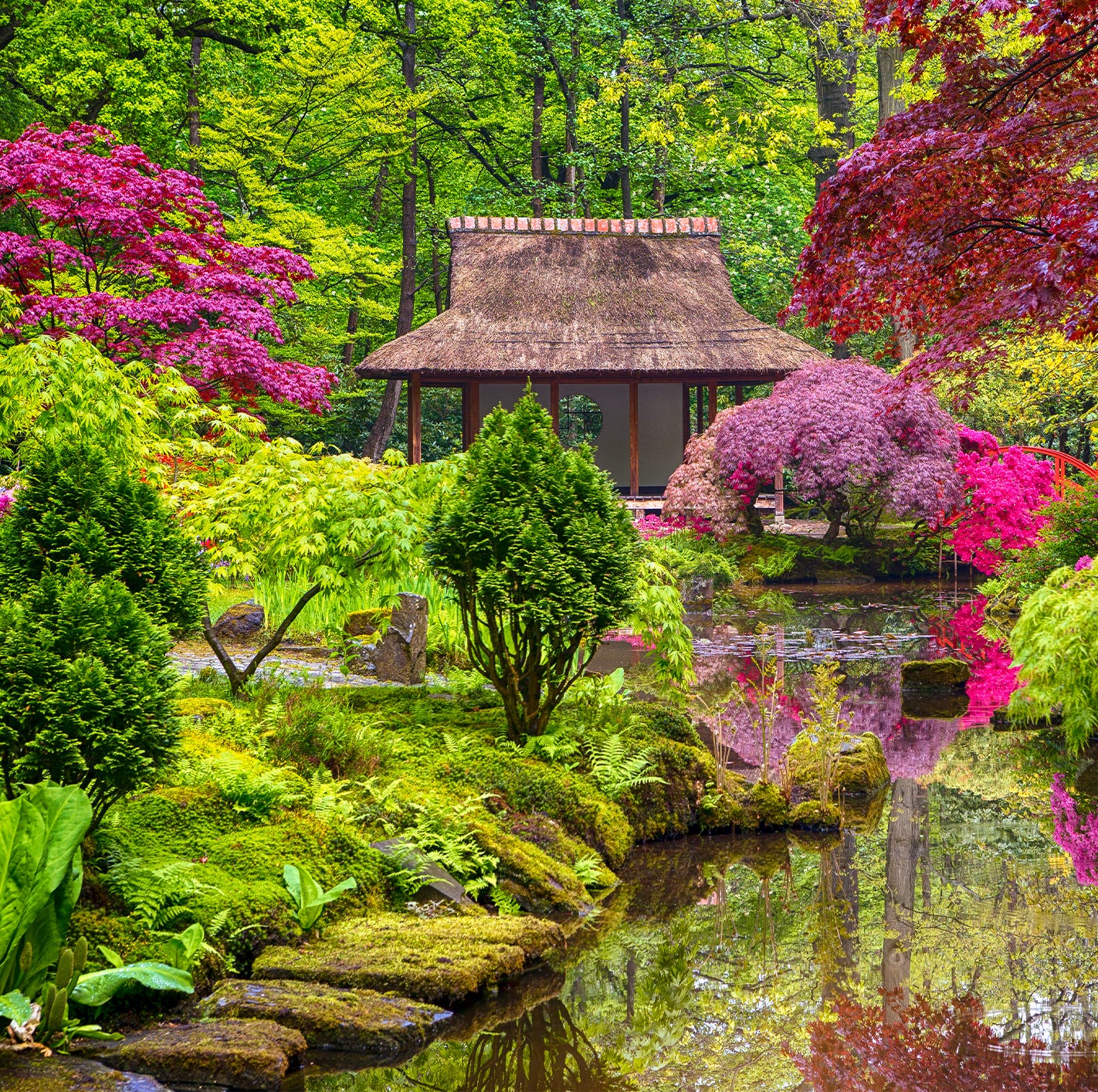BY ADRIENNE WILD & BETHAN ROSE JENKINSUPDATED: 30 JANUARY 2023
The Japanese have had a tradition for creating gardens since ancient times, that capture the natural landscape. The gardens combine the basic elements of plants, water and rocks with simple, clean lines to create a spiritual haven, which in times of war and strife was the only place they found peace.
Gardening expert and author of The Japanese Garden (Phaidon), Sophie Walker explains that, “the Japanese garden in its many forms is very much a space of contemplation,” but that “there is always a purpose and a meaning.”
When making a Japanese style garden the aim should therefore be to create a mood of mystery, calm and tranquility and capture something of the essence of nature where you can restore your inner harmony.
 GETTY IMAGES
GETTY IMAGES
Below, we explain how to create your own garden at home with Japanese garden ideas and helpful advice from pro Sophie Walker.
But don’t worry if you don’t have a lot of outdoor space, Japanese gardens can be any size as long as you keep the main concepts in mind.
Sophie explains that she saw one Japanese garden just “two foot deep running along the window ledge of the first floor of a building in central Kyoto.
“In other words, with the principles of Japanese garden making in mind, anything is possible.”
How to start your Japanese garden design
Before rushing straight into your garden design, do some research and a consider what you want from your space.
“Think about what you are looking for: an experience through the garden, which would involve a carefully directive path, or a garden to be looked at, perhaps through a framed view?” advises garden expert Sophie Walker.
To add authenticity to a more visual garden, you could imagine it will be viewed in its entirety from the house or a timber teahouse, which is raised slightly above the ground. The idea would be to look directly onto the garden and take in the sights, scents and sounds.
 The Green Switch garden at the RHS Chelsea Flower Show 2019 designed by Ishihara Kazuyuki.TIM SANDALLAdvertisement – Continue Reading Below
The Green Switch garden at the RHS Chelsea Flower Show 2019 designed by Ishihara Kazuyuki.TIM SANDALLAdvertisement – Continue Reading Below
If you are looking for a garden you can experience as you move through it, you should consider winding stone paths. These paths represent the journey through life and the anticipation of what’s to come.
In a small garden, you could wind paths so they disappear into a shrub border to create the illusion that it takes you into a woodland glade.
“My practical advice as a garden designer would be to forget about pen and paper,” says Sophie. “Physically lay out your plans with objects and then play until you feel it’s the right layout.”
Japanese garden plants
Japanese gardens rely on subtle differences in colour and texture.

Bamboo and Conifers in soothing shades of green are planted for year-round interest and trees are pruned into shapes that reveal their architectural form.
A typical feature is to have arching branches reaching over cushions of moss and groundcover, which is reflected in a pool of still water.
For the Japanese, bonsai also represents a fusion of strong ancient beliefs with Eastern philosophies of the harmony between man, the soul and nature.
 Advertisement – Continue Reading Below
Advertisement – Continue Reading Below
These miniature trees are grown in ceramic containers then pruned and trained to mimic aged, mature, tall trees in nature.
Azaleas, camellias and maples are used with restraint with the sole purpose of marking the changing seasons.
“Camellias and azaleas thrive on acid soil and flower in winter. They have wonderful deep green waxy foliage that serves as a generous backdrop shrub year round,” explains Sophie.
Where space is limited use single cherry tree to announce spring, a blaze of potted azaleas for early summer and the fiery foliage of a maple to mark the onset of autumn.

Water is a key feature and pools are crossed by a zigzag bridge, which legend says will protect you from evil spirits as they can only travel in a straight line, so the bridge traps them and allows you to escape to safety.








